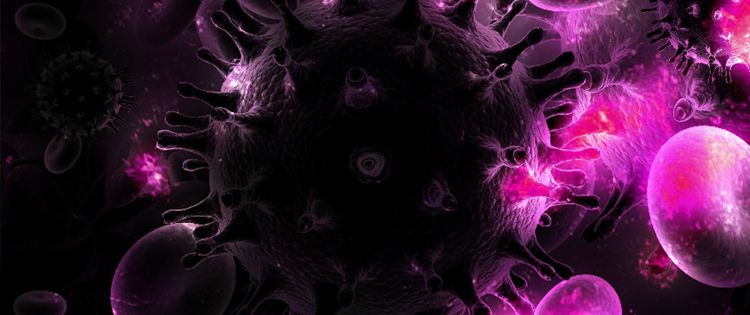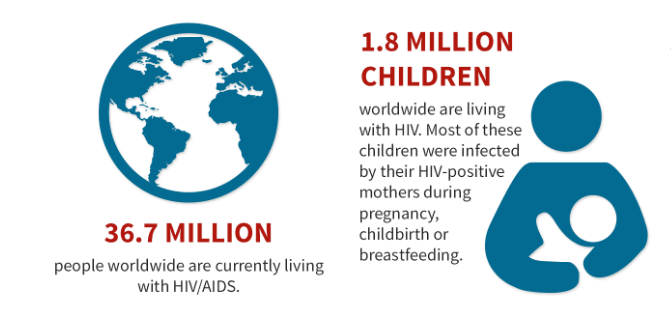Even with amazing scientific advancements in the new age, an old enemy continues to stalk and claim lives within the millions. Of the most devastating diseases, we come to face on this planet- HIV remains of the most deadly in its notoriety.
The discussion of AIDS stands hand-in-hand with its precursor forerunner, HIV. While they are sometimes discussed separately- the truth is that they are rooted from the same tree. While the disease is defined as ‘incurable’ -much advancement has been made to not only extend life expectancy- but to improve the quality of living as well. This means treatments to slow down the disease progress… and to manage the unpleasant web of side effects that comes with both illness- and the drugs prescribed.
Cannabis has emerged as a promising candidate to help improve the lives of many AIDS sufferers- both in its efficiency with providing relief for symptoms of the disease… but also in potential affordability and access to the most vulnerable populations in our world. Working towards a better future in a world where cannabis legality is becoming an open door to medical practitioners.

But first…..let us introduce the problem- and why we should care.
A Global Epidemic
According to the World Health Organization, AIDS remains a global health concern- with statistics revealing that HIV had claimed no less than 1.1 million lives globally in 2015. Not only that, no less than 36.7 million people continued to live with HIV… with at least 1.8 million of them being children under the age of 15. This continues to be an ongoing battle into the close future- with an expectation of 2.1 million new infections happening annually.
Furthermore, it is estimated that only 60% of all HIV carriers are aware of it. So the true scope of the problem may still remain just outside of our understanding.
The full Global Death report can be found on the official WHO website Here.
The 2016 Updated report by UNAID statistics can be found Here.
But Don’t Panic Yet…
It is not all bad news. The WHO in collaboration with other organisations, such as UNAID has accomplished much to slow down the epidemic.
“Between 2000 and 2015, new HIV infections fell by 35%, AIDS-related deaths fell by 28% with some 8 million lives saved.”- The World Health Organization
That’s right. The numbers may be high… but they are falling. This is great news for our future outlook if the trends continue to follow this path.
The WHO concluded this sentiment-
“Expanding ART to all people living with HIV and expanding prevention choices can help avert 21 million AIDS-related deaths and 28 million new infections by 2030.”
That’s great news! Unfortunately, there is a snag.
Not only does HIV provide a long list of complications and health problems (the eventuality becoming AIDS), the treatment can also add to the strain. The therapy prescribed to manage HIV can be a long, expensive and complex process, involving multiple drug regimes with unpleasant side effects. Scientists have long since agreed that patient compliance to medical treatment significantly grows less when the treatment itself proves unpleasant.
And AIDS is no exception.
The problem is… treatment only works if it is followed on the dot.
So how do we continue to work on improving these numbers?
Cannabis is becoming a rising star when it comes to supportive therapy- with rising evidence on its potential use for helping AIDS sufferers to not only cope with therapy… but also with the disease itself.
So what is AIDS/HIV?
HIV- or the Human immunodeficiency virus, is a viral infection, that spreads through cross-contact of bodily fluids from one person to the next. HIV works by weakening the body’s own immune system by targeting essential white blood cells called T- Lymphocytes (also known as CD4 Cells). These little guys are the core of our immunity- and are what drives our bodies to continuously fight off infection day after day. Once HIV has taken a hold of our immune system- it actively seeks to reduce the number of white blood cells within our body- rendering it unable to protect itself from incoming infection. Eventually, HIV progresses into the later stages referred to as AIDS- or Acquired Immunodeficiency Syndrome. At this point, the immune system has undergone great damage- and the white blood cell count is very low (about 200 cells per cubic millimetre of blood to be exact).
As a result, the viral load (the quantity of a virus in a person’s blood) becomes too high for the immune system to manage, resulting in death from otherwise easily curable infections (such as pneumonia), or more serious developments, such as various forms of cancers.
For an in-depth introduction to HIV, Watch this video:
OSMOSIS PRESENTS: HIV & AIDS – signs, symptoms, transmission, causes & pathology.
Treating AIDS – a work of ART
The foremost and most effective way to treat and manage HIV is through close monitoring and a lifelong management plan of Antiretroviral Therapy (otherwise known as ART).
That’s right. Every single day.
There can be no ‘cheat days’ or days where a dose is missed. That runs the risk of the host gaining a resistance to the drug- and may result in there being fewer options for you in the long term.
ART generally involves a combination of drugs called “Antiretroviral medications” selected by a highly trained health practitioner to meet the individual needs of every patient.
These drugs generally aim to slow down the progression of the HIV virus- and to give a much-needed boost to the immune system by increasing white blood cells.

The good news is- this method has proven highly effective at improving lifespan and slowing down the disease. The bad news is that as the disease gets more complex, you require more medications. We fall into a trap called call Polypharmacy.
“Polypharmacy” simply refers to using multiple medications for a sustained period of time- and is linked with issues regarding drug interactions, side effects, and difficulty in complying with medications.
This provides a possible challenge in HIV treatment as the full regime may not only involve the drugs targeting the HIV virus itself- but can also involve additional medicines aimed at managing the diseases and infections HIV and AIDS bring to the plate. It becomes a general concern for HIV patients to continue their treatment accurately over a long period of time- especially when additional issues begin to arise.
This can have deadly consequences.
And not only that, each medication we ever take runs a risk of a long list of potential side effects. In fact, prolonged HIV therapy has been known to eventually accrue quite a comprehensive list of symptoms and side effects; with nausea, vomiting, and neuropathic pain being only the tip of the iceberg. The full list can be found here.
This all sounds like it can get pretty complicated.

It’s little wonder why we worry about sticking to the treatment.
Luckily, this is where Marijuana comes in.
For a useful overview of HIV treatment: Patient education: Initial treatment of HIV (Beyond the Basics) 2017
Wasting Syndrome & The Burden of Treatment
The important thing to remember about HIV is that it presents itself as an open door to many kinds of strains on the body. This includes (but is not limited to) the extra baggage that offloads on your body after a long time fighting off illness and managing drug side effects.
One such challenge presented by HIV is a condition known as Wasting Syndrome (or for the science folk- Cachexia). Wasting syndrome is common in AIDS patients, and becomes clinically diagnosed when at least 10% of body weight is lost due to the progression of the disease and puts the AIDS patient at high risk as they need all the help they can get to fight off disease.
Furthermore, this is also usually accompanied by a period of chronic diarrhoea and high fevers (for at least a month). Even with yearly improvements to HIV treatment and survival rates, chronic weight loss and wasting are still among the commonest manifestations of advanced HIV.
Wasting syndrome adds a heavy burden onto HIV patients in their ability to enjoy independent lives.
In fact, a long-term study on the physical impact of wasting syndrome stated- “HIV-wasting had a similar effect of 10 – 20 years of ageing on Quality of life”.

For HIV-positive patients…Nausea, vomiting and lack of appetite are common. And through the effects of inflammation from the infection itself (particularly that of the guts), wasting syndrome becomes a serious risk when the causes are left unchecked.
The worst part is? Once the weight comes off, it’s extra hard to put back on.
This reduction of food intake results in the loss of essential fats and muscle, the body literally begins to eat itself away. The long-term effects of this condition are not only deadly- it drastically becomes difficult to live with, as the body loses mobility and functionality… eventually leading to heart problems and death.
But wasting syndrome isn’t the only problem. As discussed earlier, while HIV treatment has proven to extend life expectancy and even improve the quality of life…. the side effects of medications in individuals with complications to their HIV also adds an additional strain on the body if left untreated.
It’s not to say that HIV treatment does not improve matters…. but it is easy to overlook the importance of managing side effects.
How does Cannabis Help?

Marijuana. There is much this little plant can do for you… it promotes relaxation and enjoyment and also offers the benefit of helping to manage certain chronic conditions (such as epilepsy). But if you asked most people about the “side- effects”, most will come to the same story.
The munchies.
The most common side effects of regular marijuana use are the increase in appetite and snacking behaviours. This association has not only been anecdotally proven time and time again, it has also been proven in various studies. So the link between marijuana use and looking at treating weight and eating issues was not only plausible…it’s completely natural.
In fact, it was for this exact reason that drove scientists and doctors into researching the benefit of using cannabis for treating weight disorders or wasting syndromes seen in advanced stages of HIV and cancer.

There is already much research going into this field, and so far studies have found that HIV-positive people who regularly took cannabis reported that they had significant improvements in their appetite, nausea, and a reduction in chronic neurological pain, anxiety, depression, and weight gain.
How does this work? Scientists believe that cannabinoids help to control and regulate mammalian metabolism. When we return to the basic sciences, we remember that CB1 and CB2 receptors are located throughout the body. This includes the nervous system and the stomach and intestines. When these receptors are activated- our cravings for food increases and our enjoyment of eating (through taste, sense and smell) becomes stimulated.
This activates a positive reward pathway which is the body’s own personal way of promoting behaviours…by telling us that we enjoy the act of eating.
And since Cannabis reserves its own special spot for receptors, it is able to do so without competing with other drugs that may also target the same areas of the brain, which can effectively “override” side effects with the right dose.
Dronabinol vs. Megestrol- An example
Medical marijuana is already being used to help cancer sufferers to regain their appetites. The current medication of choice has been Dronabinol (Marinol®), one of the FDA-approved synthetic cannabinoids used regularly in combination therapy to treat nausea and anorexia in patients undergoing cancer treatment.
A recent study examined the cannabinoid effectiveness against its traditional partner- Megestrol (Menace®) – a synthetic hormone. The results showed that whilst Dronabinol performed a little less efficiently than Megestrol, it lacked the severe side effects that are common when taking Megestrol. This highlight’s Dronabinol’s place as a decent option for when megestrol may not be tolerated in normal circumstances and shows a positive outlook for Dronabinol’s use in the future with studies examining the benefit of higher dosages.
The success of Dronabinol in those instances have since encouraged doctors to consider its use for treating similar symptoms in other illnesses- such as the Wasting Syndrome witnessed in AIDS sufferers.
What is Dronabinol?
Dronabinol is a synthetically-made form of THC (“man-made cannabis”) which is available and taken as a capsule. It shares a similar chemical composition of the naturally occurring THC found in the Cannabis plant- and behaves in a similar way. Down below, you can see the similarities:
Synthetic Dronabinol (THC)
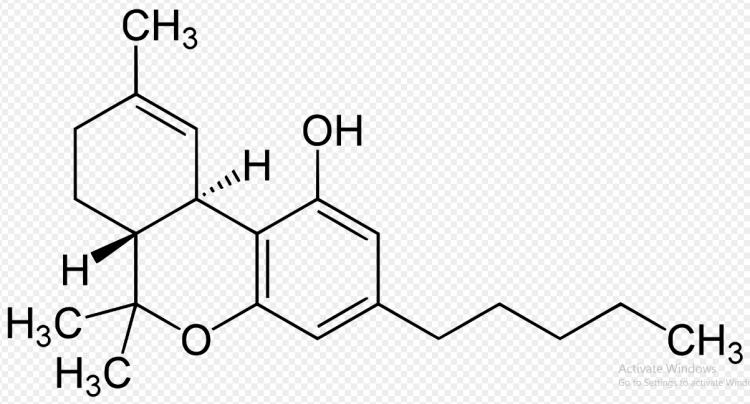 IMAGE SOURCE: https://upload.wikimedia.org/wikipedia/commons/thumb/4/4c/Tetrahydrocannabinol.svg/2000px-Tetrahydrocannabinol.svg.png
IMAGE SOURCE: https://upload.wikimedia.org/wikipedia/commons/thumb/4/4c/Tetrahydrocannabinol.svg/2000px-Tetrahydrocannabinol.svg.png
Natural THC derived from Cannabis Sativa
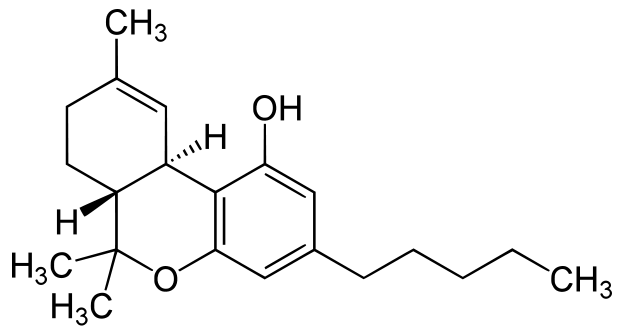
IMAGE SOURCE: http://www.medicalmarijuana.eu/wp-content/uploads/2016/09/Dronabinol.png
But it doesn’t stop there. More trials have outlined marijuana’s ability to help AIDS patients to manage their other symptoms as well. AIDS patients, who have regularly taken cannabis in the form of an inhalant, or as Dronabinol, found that they had improvements in their mood, anxiety levels, depression, muscle pain, insomnia- and significant improvements in neuropathic pain levels. It is important to note, however, that simply smoking cannabis may produce its own variety of health risks… and is not considered an ‘optimal form of delivery’.
This is where Dronabinol shines, it is proven safe, easy to take and effective.
Cannabis- The final CURE for HIV?
While cannabis continues to earn acceptance in its supportive role with treating severe symptoms of HIV and the side effects of ART…. there is a controversial debate on the subject of its ability to actually eradicate HIV. This sounds like an ideal scenario, as undergoing an ‘HIV regime’ is not only exhausting; it can be expensive, difficult to access and debilitating in its own right when faced with a long list of side effects.
The truth of the matter, however, remains under continuing investigation. But it is true there have been many recent developments in the scientific community that have discovered positive findings regarding medical cannabis’s ability to take another step further in HIV treatment. In fact, one example of such a study found that marijuana may, in fact, have the ability to cut off HIV progression in late-stage HIV.
And the evidence is growing.
The Literature- Still work to do
There have been an increasing number of studies that have highlighted a positive change in improving appetite and alleviating the negative symptoms of illness though the use of marijuana in specialised doses and forms. Unfortunately…..there is a catch-22.
The current and most up-to-date findings applied mainly to Acute-marijuana use- those who were prescribed a high intake of cannabis over a set time period. There is still work to be done as to whether the same findings might apply to long term use, and if it may apply to all HIV-positive patients.
While there have been positive relationships between marijuana use and weight gain… when it comes to concluding solid evidence regarding the benefits of improving weight gain for wasting syndrome, studies have revealed mixed results. The truth of the matter may be that there may be too many independent factors that affect human metabolism (such as genetics, exercise, dietary content, learned eating behaviours and socioeconomic status) to numerically measure the impact of marijuana on the desired accuracy we need to put it on the prescriber’s table once and for all.
We also lack the knowledge, yet to determine if marijuana use can be directly linked to improved compliance in AIDS patients, as we lack the research to highlight this.
Lastly, there is the reality that currently cannabinoid medications still perform a little less efficiently than their traditional counterparts. But the research is still in its early stages, and more research is needed to address the weaknesses in previous trials.
But it has been proven time, and time again that cannabis still provides the valuable benefit of giving you far fewer side effects and is an additional support when your medication routine becomes a burden.
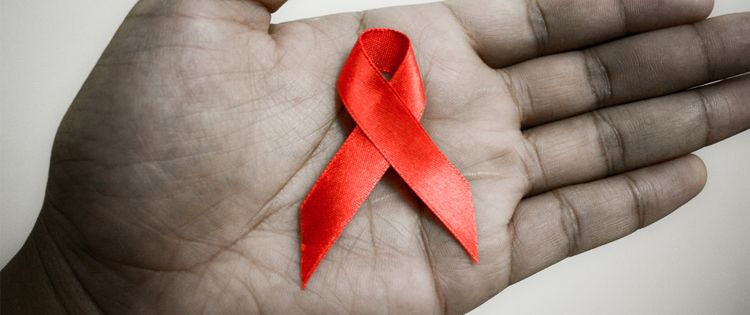
The Future of Marijuana in and HIV
The positive results only continue to grow- and provide a stronger platform for our researchers to continue to develop, and perfect cannabis treatments. The positive relationship does exist. And with the rise of evidence in cannabis’s potential to actually cure HIV, we may have only potentially tipped the iceberg when it comes to the future of treating these advanced illnesses.
While we still have questions… we are coming ever closer to the answers.
This means that scientists are discovering positive changes that can be linked to marijuana use – and that this provides us with the much-needed drive to continue research for an end-goal, that could provide a better future of ART compliance and an improved quality of life.
The fact remains that cannabis continues to provide a wonderful support for ensuring that AIDS patients may continue to enjoy an independent life, with the burden of sickness gradually lifted from their shoulders.
Do you know someone who needs to know about this new development for the treatment of HIV/AIDS?
Why not share this story and make a difference.
- Going Anti-Malaria with Marijuana - March 17, 2017
- Wasting Away- How Cannabis Helps AIDS Patients - February 10, 2017
- Cannabis: The Hidden Cure for Bone Disease - January 18, 2017

